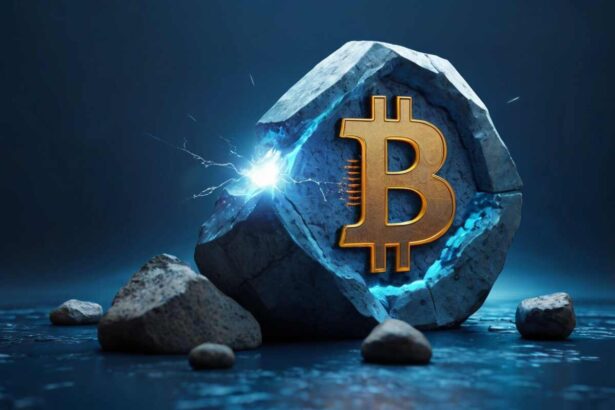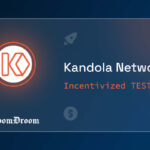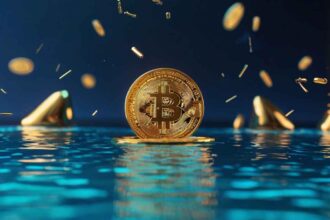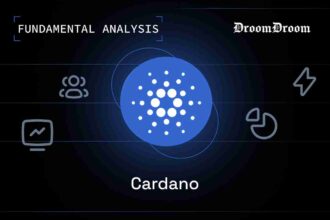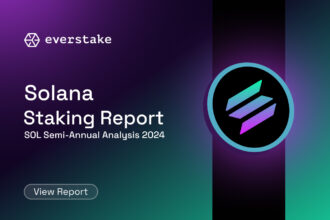It is almost impossible to turn a blind eye to the effects of blockchain technologies and their alluring concepts, some of which have proven to be fused with massive opportunities. In a world of growing trends, it is also difficult to precisely grasp the underlying concept behind the crypto and DeFi trends. As a result, a large part of the Web3 ecosystem and the DeFi industry appears to misunderstand or completely miss out on finance-revolutionizing concepts, such as, but not limited to, Real World Assets in the blockchain environment.
- Understanding Real World Assets (RWAs)
- Use Cases Of Real World Assets
- Real Estate
- NFTs and Art Collections
- Stocks and Bonds
- Machines
- Increased Liquidity
- Portfolio Diversification
- Accessibility
- Efficiency And Automation
- Security
- How Does it All Come Together?
- Off-Chain Formalization
- Information Bridging and Tokenization
- Demand and Supply Dynamics
- Illustrative Example (Real Estate)
- RWAs in DeFi and Crypto Protocols
- Review of Some Real World Assets (RWAs) Protocols
- Concerns With Real World Assets (RWAs)
- Future and Implications of Real World Assets (RWAs)
- Conclusion
- Frequently Asked Questions (FAQs)
Real world assets are transformative and refer to assets existing off-chain or outside digital spheres that are embedded on-chain through tokenization.
In this article, you’ll learn all there is to know about real-world assets, their purpose, how they work, and their limitations as well.
Understanding Real World Assets (RWAs)
Decentralized finance is gradually infiltrating every sector and has become one of the reasons why the tech industry can only grow larger. Traditional finance systems merge with decentralization, creating an environment for community ownership and autonomy over assets, with cryptocurrencies and altcoins being just a fraction of this landscape. By integrating real-world assets into the crypto space and bridging traditional finance with decentralization, new solutions and opportunities are unlocked.
Real world assets (RWAs) encompass both tangible and intangible assets existing in real life and time, ranging from real estate to stocks and bonds. This provides a substantial investing pool for Web3 and crypto users in DeFi systems to engage in financial markets. By representing traditional financial instruments and markets on DeFi protocols, a new source of value yield is created, eliminating intermediaries and minimizing regulatory roadblocks. The process of hosting these real assets on the blockchain is referred to as tokenization, exemplified by stablecoins—digital tokens representing fiat currencies in value and features.
Tokenization involves transferring the properties of a physical asset onto the blockchain in digital form. The features, properties, and value of the physical asset are linked to a programmable unique digital certificate created on the blockchain, viewable and tradable across the platform. These tokens can be further split into bits through fractionalization, lowering the price and increasing accessibility for investment.
Referring to tokenized assets as just digital forms of physical assets could be erroneous or rather incomplete. Real world assets, once tokenized, include a set of rules tailored to meet the operational and transactional needs of each asset. This contrasts with the traditional system where assets are grouped into classes and governed by the same set of class rules. Asset tokenization creates high-quality tokens, extending beyond tangible physical assets to encompass intellectual properties and treasury bills.
Use Cases Of Real World Assets
There are intriguing implementations of Real World Assets (RWAs), demonstrating that the concept extends beyond theory.
Real Estate
In the real estate investment sector, asset tokenization involves the digitalization of transactions and management. Automation and transparency features reduce costs and fraud, while increased accessibility allows owners to earn rentals from tokenized units of real estate properties.
NFTs and Art Collections
Unique artworks, both digital and real, are transformed into transferable fractions, enabling joint ownership of credible and valuable artworks. NFTs can be broken down into bits, reducing illiquidity and facilitating digital art trading.
Stocks and Bonds
Tokenized bonds and stocks backed by traditional financial instruments, such as treasury bills, create higher yields for investors by introducing fractional ownership and digitalized management.
Machines
Heavy machinery used by firms investing in mass production can be owned in fractions, democratizing usage rights and asset ownership of industrial equipment.
The purpose of real world assets (RWAs) lies in reformation, innovation, and efficiency, driven by the limitations present in the traditional finance system, including irregularities, inefficiencies, human errors, organizational procedures, and associated costs. Daring and enthusiastic investors are drawn to RWAs for their potential to remodel the financial landscape, allowing virtual interactions with traditional investments with increased stability.
Increased Liquidity
Assets like shares and valuable paintings, often illiquid in traditional finance, become more exchangeable in the absence of rigorous paperwork and middlemen charges, enabling instantaneous ownership transfer.
Portfolio Diversification
Smart contracts within the RWAs marketplace offer flexibility and increased accessibility to units of investment, promoting portfolio diversification.
Accessibility
Fractionalizing real world assets into tradable value units makes the investment pool more accessible to small-scale investors without damaging the assets.
Efficiency And Automation
Unlike traditional finance, RWAs transactions aren’t bound by limitations like business days or manual verification. The seamless validation process and flexible exchange of assets, driven by technologies like smart contracts, enhance the overall investment experience.
Security
DeFi protocols provide a secure backend for financial services, reducing risks through the transparency of blockchain technologies, thereby enhancing market efficiency and creating a more trustworthy system.
Fractional Ownership and Inclusivity: Creating transferable units increases the pool of investment options, reducing entry barriers, attracting new investors, and generating more opportunities for inclusivity in the market.
How Does it All Come Together?
The process of seamlessly moving tokenized off-chain real world assets across physical and virtual realms may seem complex, so let’s dissect the entire process.
Off-Chain Formalization
Assets need adequate representation on-chain through off-chain formalization. This involves detailing the asset’s worth, ownership rules, and operational information. Real world assets are brought onto a DeFi protocol, stating their economic value, ownership, and transfer history, as well as other property rights.
Information Bridging and Tokenization
The value and features of the asset are set on the blockchain ledger, locked, and transparent. This phase involves tokenization, a digital reformation of data collected during off-chain formalization. Data is programmed and stored as metadata within a protocol. Regulatory oversight and licenses are transferred onto preferred protocols, syncing real-life performance data with the tokenized asset, creating a dual existence – physical and virtual. Information transfer and securitization are achieved at this level.
Demand and Supply Dynamics
Demand and supply facilitate value. Defi protocols initiate offerings, driving demand for RWAs. The asset’s marketplace and customer pool increase and fractionalization allows more units of the same asset to be obtained, as investors can own fractional shares and trade them without complete ownership requirements.
Illustrative Example (Real Estate)
Consider a scenario in real estate investing. Unable to acquire an entire apartment building due to funding constraints, you explore a tokenized version on a DeFi real estate marketplace. Here, you can invest in and own fractions of the building, with each block or ‘token’ clearly formalized off-chain, stating rules of operation and transfer. Once the information bridging phase is complete, licenses and deeds are securely built into the protocol, and the asset, the apartment building, is listed and ready to meet demands.
It involves a linear process: tangible assets are acquired in the real world, then tokenized and distributed to interested parties on the blockchain.
RWAs in DeFi and Crypto Protocols
There is an impressive range of blockchain protocols offering financial solutions, creating liquidity and opportunities through lending and yield farming. By tokenizing real world assets such as gold, the total value of RWAs is estimated to exceed $800 million USD. Despite the concept not having reached maturity, it undeniably thrives and disrupts traditional finance (TradFi).
The concept of RWAs in DeFi may continue to scale, unlocking embedded financial value. A contributing factor is the shift in investor mindset within the blockchain ecosystem. Beyond mere hype, there’s a growing need for more utility in crypto assets. Typically, a trend or token faces a rapid decline in value if it lacks sustainable utility and proper tokenomics. Projects without proper utility often lack longevity and are more susceptible to rug pulls. Hence, the search for more stable asset classes and long-term investments instead of chasing quick gains. This shift is evident in the increasing interest in stablecoins and other stable assets.
Review of Some Real World Assets (RWAs) Protocols
Centrifuge
Renowned as a DeFi lending protocol, Centrifuge brings real world assets on-chain. Originally built on its blockchain, Centrifuge’s main project, Tinlake, is a real asset marketplace enabling users to bring collateralized loans on-chain. Traditional assets like mortgages and invoices are tokenized for use as collateral in obtaining on-chain credit. In 2021, Centrifuge raised $4.3 million to scale its services in real world assets tokenization.
RealT
An outstanding platform focused on fractional ownership of tokenized real estate properties, RealT facilitates tokenized shares and incorporates KYC technologies. It utilizes the US legal system and Ethereum to offer tokenized properties.
Elyfi
A decentralized platform offering tokenized real world assets, including residential real estate and e-commerce receivables, Elyfi provides enhanced stability and flexibility for diversifying financial portfolios.
Maker RWA
With over $4 billion in assets, Maker RWA generates revenue by issuing DAI in exchange for collaterals locked within its RWA vaults. Accepted collateral types include real estate, bank loans, and bonds. It has over $700 million in RWA collateral in its Total Value Locked (TVL) and generates a $20 million Annualized Stability Fee.
Maple
Maple RWA is a capital marketplace designed for lenders to offer uncollateralized lending to institutions. Launching its loan pool for increased flexibility, it reached about $62 million in TVL, with its RWA at $22 million.
Concerns With Real World Assets (RWAs)
Layer 1 and Scalability Concerns
Similar to other innovative features of blockchain technologies, scalability is a crucial need for RWA issuing protocols. Scalability provides faster transaction speeds, increased transparency, interoperability, and flexibility, essential for the proper integration of traditional asset management into the DeFi landscape. With the dynamic growth of tokenization across various sectors, including intellectual property, issuing protocols must scale development to efficiently handle increased transaction volume, ensuring seamless operations to build public confidence in the wide range of investment opportunities offered.
Regulatory Implications
Due to the intricate nature of the blockchain ecosystem, legal rules and regulations within DeFi are novel and challenging to establish comprehensively. The lack of clear jurisdiction and compliance rules poses a threat to the progressive adoption of RWAs in DeFi, leaving users vulnerable to risks such as money laundering, fraud, and data privacy issues. Additionally, matters of dispute resolution lack clarity, making it uncertain which court or dispute resolution method to adopt.
Security and Technical Concerns
While blockchain provides immutability and security benefits, it is not entirely immune to risks, whether from managerial issues or system attacks like hacks. Continuous smart contract auditing and security advancements are necessary to mitigate risks. However, projects built on complex designs may not be entirely resistant to threats that could disrupt operations, impacting user experience and asset security.
Future and Implications of Real World Assets (RWAs)
Even in its early stages, real world assets in DeFi evoke both fascination and criticism. The fear of fundamentally altering traditional finance and relying on new innovative technologies is valid but often based on misguided assumptions.
In the face of disruptive technologies, it’s crucial to highlight the minimal risk that RWAs in DeFi and crypto pose to traditional financial systems. By addressing the inefficiencies of traditional finance, it offers a more acceptable alternative rather than a threatening one.
The virtual marketplace has minimal impact on the physical finance market and traditional finance. Instead, it merely represents the activities of real world assets in a crypto marketplace. Real world assets token price volatility is more stable than crypto assets like Bitcoin and altcoins. Additionally, the crypto asset market, when measured against traditional finance, is relatively small and offers limited quantities, alleviating concerns about disrupting traditional finance.
Cross-Chain applications introduce features like yield optimization and enable token transfer across blockchains, creating a broader market and enhancing accessibility, thereby increasing volume and Total Value Locked (TVL).
Conclusion
The RWAs sector has experienced substantial growth within a short timeframe, overcoming regulatory and compliance factors that initially appeared to impede its development. Data from DeFiLamal indicates significant progress, placing the RWA sector at $2 billion in 2023. This growth might stem from a desire for more long-term investments within the DeFi landscape or could be a result of increased inclusion and a broader audience. Nevertheless, real asset tokenization serves as a bridge between familiar finance opportunities and decentralization, providing a range of solutions.
Frequently Asked Questions (FAQs)
What are Real World Assets (RWAs) in DeFi?
RWAs in DeFi refer to tangible assets like real estate or commodities tokenized on the blockchain, allowing their integration into decentralized financial protocols.
How Do DeFi Platforms Address Scalability Concerns in Rwa Protocols?
DeFi platforms tackle scalability through measures like faster transaction speeds, increased transparency, and interoperability, ensuring seamless integration of traditional asset management.
What Regulatory Challenges Does the Rwa Sector Face in DeFi?
Regulatory challenges include the complex legal landscape of DeFi, the lack of clear jurisdiction, and the need to establish comprehensive standards for user safety against risks like money laundering and fraud.
What Security Measures Are in Place for Rwa Protocols in DeFi?
Security measures include continuous smart contract auditing, advancements in security, and efforts to mitigate risks from both managerial issues and system attacks such as hacks.
How Does the Growth of the Rwa Sector Impact Traditional Finance?
The growth of the real world assets sector has a minimal impact on traditional finance, offering stable tokenized assets and serving as a bridge between familiar finance opportunities and decentralization in the DeFi landscape.
